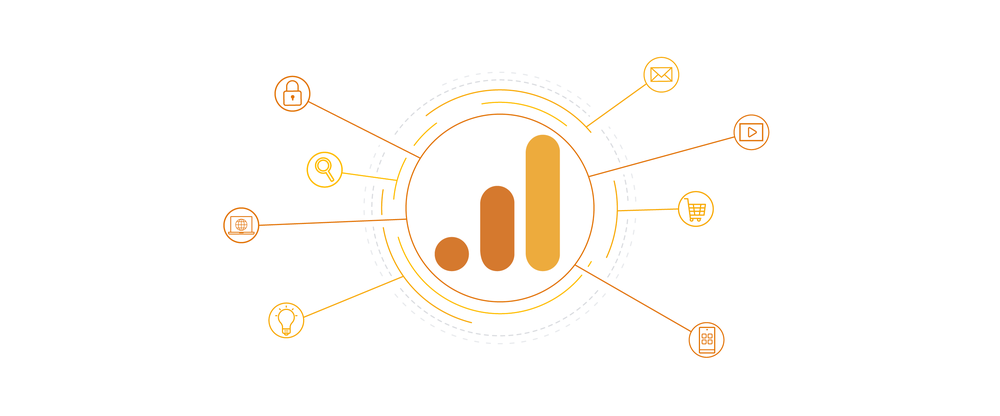Google has announced the release of Google analytics 4. It is the new version of Google’s data collection and analysis tool. Google analytical tool is the most widely used tool by marketers, websites, and business owners to track the performance of their website. Google analytics helps them to collect data about the traffic that is interacting with their websites, the performance of their various marketing campaigns, user interaction across websites, mobile apps, measure their KPIs and so much more. This new updated version of the tool will enable marketers to do a lot more efficiently as it has a distinct difference from the “universal/traditional” google analytics. GA4 (Google Analytics 4) is advanced as it uses AI to fill gaps in data whereas the traditional version relies on cookie usage rules and is blocked by Java. The user interface is better and friendly even for naive users and beginners.

In this article, we have tried to cover everything from what is Google analytic 4 to its unique properties and the scope for marketers with it. Let’s take a tour of GA4:-
What is Google Analytics 4 (GA4)?
Google stated that the reason for the new Google Analytics is the advancement of new technologies and the rise in demand for “privacy as a priority”, following, x-channel estimation, and AI-based usage in information collection at the same time. By applying Google’s AI models, the new Analytics can fill data gaps for website traffic and client/customer behavior without depending on having “hits” coming from each page.
Google Analytics 4 is based on the “Mobile Application + Web” framework that they delivered in 2019. The App + Web adaptation of Analytics was fundamentally developed around cross-channel information, implying that it gave advertisers an approach to follow clients across applications, programming, and a site.
This implies that its fundamental objective is to change how information is presented to customers from the beginning to their conversion as clients.
Also, GA4 is focusing on “events”. These events are the principal way in which the information is introduced in the new Google Analytics.

AI handling the procedures in this new Analytics implies that it can fill in gaps that organizations can’t comprehend and are not able to deliver to their best abilities. A lot of their customers and traffic that visit websites are choosing without cookies and hence companies are not able to get all data about their visitors it will be resolved with GA4 and its AI-driven process. Users and even browsers are getting more protective and do not allow analytics to collect data. For instance, Mozilla Firefox has moved to introduce “Block Analytics”, and a lot of sites are beginning to prioritize visitor agreement to characterize their Analytics. People are opting out of consent for using cookies and analytics is changing it hindering organizations to collect all data and keep track.
The requirement for something like Google Analytics 4 to a great extent comes from new security assurance laws (like the GDPR and CCPA) and the falling apart of universal analytics. Many organizations are utilizing Universal Google Analytics which could frequently run into issues with mistaken or missing information because of consent issues by users for cookies because of these privacy laws.
Key Features of Google analytics 4 (GA4)
GA4 will permit advertisers to alter and adjust to how events and marketing campaigns are followed in analytics without any coding required.
Importing data will now be easier as it incorporates getting information from a wide variety of non-website sources (example:- Apps) all with just one property.
With Google Analytics 4 cross-domain tracking of the website is easier. It can be done without codes (adjusting codes) and can be done inside UI.
The biggest and predicated to be the most impactful change in GA4 is “The Life Cycle Report” for all accounts and focuses on showing the visitor or user journey on site. The feature “Templated reports for e-commerce funnels” gives advertisers an approach to show and view information – a component of analytics that was earlier accessible to only Analytics 360 accounts.
GA4 will work with AI as the fundamental process for collecting information and analysis, utilizing “machine learning and modeling” for measuring data, that can extrapolate from existing information and make suggestions about site traffic/client conduct. A new feature of AI-controlled “insights” will analyze on its own and will suggest relevant and supportive data for advertisers.
It’s centered around giving advertisers a “more complete comprehension of the client venture and behavior on various devices.” And it appears to be that it’s more focused on estimating a start to finish customer venture, and not simply focus on singular measurements across gadgets or pages.
The design intends GA4 to be “future immune” and work in a world with no cookies or distinguishing information.
Google Analytics 4 highlights “streams of data” rather than the “views” and fragments utilized by Universal Analytics properties.
The “view” level part is removed in GA4. While conventional Universal Analytics broadly has three levels (Account, Property, and View). As it might show biased data hence “view” hence removed and GA4 just has Account and Property levels.
While “tracking events” in conventional Analytics required Analytics code, editing, or gtag.js content, Google Analytics 4 professes to empower editing, following, and adjusting of events inside the UI. This implies interactions like page scroll, clicks, and more, that’s only the tip of the iceberg.
Setting Up Google Analytics 4
There are many ways of setting up a new Google Analytics property for your website. Businesses can set up this new version (earlier known as App + Web property) by visiting the Domain section of their existing accounts.
Let’s take a look at how you can set “GA4 property” with your existing Universal Google analytics:
- Sign in to your Analytics account within your website’s existing property.
- Search for the Admin section.
- Now, in the Account column, you can see “account” select the account. Choose the account in which you want to create the GA4 property.
- Click in the Property column, select the Universal Analytics property for your site that you desire.
- Now here you will see the ‘GA4’ option and select “Upgrade to GA4” and follow the steps. If you can not see any such option fear not as in some cases this button is not visible.
- Now you have to select “Create a property” and then follow the steps and create a new property for “Web + App”. Using this default setting you will be taken to the new “Google analytics 4” property and your account will upgrade to GA4.
- Once this step is completed you will have the new version of Google analytics-GA4. There will be few others steps to follow before the property start appearing in your account.
- Now for activating “enable data collection” there are two ways: link the existing tracking data from your conventional Analytics, or you can start with new tags. You can add these tags to your website in a similar way as in traditional analytics.
Google analytics 4 is the future in data analytics and marketing. The best part about this upgrade is that it allows you to start with this new tool and collect data effectively with new features and yet keep your data from your previous account intact. Marketers should rush to upgrade their accounts and leverage the maximum benefit from GA4.
Digital & Social Articles on Business 2 Community
(10)
Report Post






